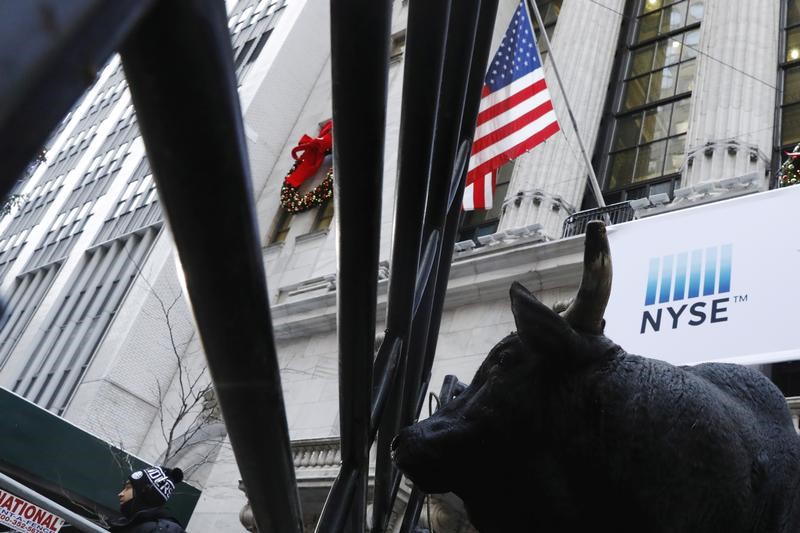Earnings call: CTO Realty Growth reports strong Q3 2024 performance

CTO Realty Growth (NYSE: CTO) has reported a positive third quarter in 2024, with significant investments and leasing activity driving growth. During the earnings call, CEO John Albright and CFO Phil Mays outlined the company’s accomplishments and future strategies, including a raised full-year guidance for core Funds From Operations (FFO) and Adjusted Funds From Operations (AFFO), and the completion of strategic acquisitions and leases. The company also discussed its structured investment portfolio expansion and its approach to asset management in light of current market conditions.
Key Takeaways
- CTO Realty invested $191.3 million at a 9.5% yield, including significant acquisitions in North Carolina and Florida.
- The company achieved a leased occupancy rate of 95.8%, with year-to-date leasing activity reaching 385,000 square feet.
- Core FFO per diluted share increased to $0.50, and AFFO per share rose to $0.51.
- Full-year 2024 guidance for core FFO is now $1.83-$1.87 per share, and AFFO is projected to be $1.96-$2.00 per share.
- There are no significant move-outs expected in 2025, with higher rent offers from new tenants presenting opportunities.
- The company targets an additional $25 million to $75 million in acquisitions by year-end and is considering a high-quality structured finance investment near existing assets.
- Management remains optimistic about leasing and acquisition activity despite macroeconomic uncertainties.
Company Outlook
- Raised full-year 2024 guidance reflects the company’s strong performance and positive outlook.
- Ongoing lease negotiations, particularly for second-generation restaurant spaces, indicate a robust demand in the retail sector.
- The company aims to maintain a balanced approach to leverage, with potential short-term increases for acquisition opportunities.
Bearish Highlights
- The sale of mitigation credits is complete, with no further earnings from real estate operations expected.
- Macroeconomic uncertainties are being closely monitored, especially challenges in the restaurant sector.
Bullish Highlights
- The company’s structured investment portfolio expansion includes a $43.8 million first mortgage loan and a $10 million preferred equity investment.
- A three-property portfolio acquisition is anticipated to yield significant occupancy increases and positive returns from tenant activities.
Misses
- There was no mention of misses in the provided context.
Q&A Highlights
- Discussions on potential future funding strategies and property management decisions were held.
- The company discussed Fidelity’s long-term office space utilization plans, contributing to FFO starting in 2025.
- No significant move-outs anticipated for 2025, with opportunities arising from higher rent offers from new tenants.
- Leverage levels have decreased, with the company aiming to maintain a balanced approach.
- Future asset recycling is expected to diminish, with potential sales of smaller assets being evaluated based on market conditions.
CTO Realty Growth’s third quarter earnings call highlighted the company’s robust investment and leasing activities, financial growth, and strategic asset management. With increased guidance and a focus on maintaining a strong portfolio, CTO Realty Growth is positioning itself for continued success in the face of a dynamic real estate market.
InvestingPro Insights
CTO Realty Growth’s strong third-quarter performance is further supported by recent data from InvestingPro. The company’s market capitalization stands at $590.44 million, reflecting its substantial presence in the real estate sector. Notably, CTO’s revenue growth of 19.62% over the last twelve months aligns with the positive leasing activity and strategic acquisitions mentioned in the earnings call.
One of the most striking metrics is CTO’s impressive dividend yield of 7.71%, which underscores the company’s commitment to shareholder returns. This is reinforced by an InvestingPro Tip highlighting that CTO “pays a significant dividend to shareholders.” Moreover, the company has maintained dividend payments for 49 consecutive years, demonstrating a long-standing dedication to providing consistent income to investors.
The stock’s performance has been robust, with a 36.76% price total return over the past year, and it’s currently trading at 93.1% of its 52-week high. This upward trajectory aligns with the company’s raised guidance and positive outlook discussed in the earnings call.
InvestingPro also notes that CTO is “trading at a low P/E ratio relative to near-term earnings growth,” which could indicate potential value for investors considering the company’s growth prospects and strategic investments.
For readers interested in a deeper dive into CTO Realty Growth’s financials and future prospects, InvestingPro offers additional tips and metrics. In fact, there are 11 more InvestingPro Tips available for CTO, providing a comprehensive analysis for those looking to make informed investment decisions.
Full transcript – CTO Realty Growth Inc (CTO) Q3 2024:
Operator: Good day, and thank you for standing by. Welcome to CTO Realty Growth’s Third Quarter 2024 Earnings Call. At this time, all participants are in a listen-only-mode. After the speakers presentation, there will be a question-and-answer session. [Operator Instructions] Please be advised today’s conference is being recorded. I would now like to hand the conference over to your host today, John Albright, President and CEO. Please go ahead.
John Albright: Good morning, everyone, and thank you for joining us today for the CTO Realty Growth third quarter 2024 operating results conference call. I’m joined today by Phil Mays, our Chief Financial Officer. Before we begin, I’ll turn it over to Phil to provide a customary disclosure regarding today’s call. Phil?
Phil Mays: Thanks, John. I would like to remind everyone that many of our comments today are considered forward-looking statements under federal securities laws. The company’s actual future results may differ significantly from the matters discussed in these forward-looking statements, and we undertake no duty to update these statements. Factors and risks that could cause actual results to differ materially from our expectations are disclosed from time to time in greater detail in the company’s Form 10-K, Form 10-Q and other SEC filings. You can find our SEC reports, earnings release, supplemental and most recent investor presentation on our website at ctoreit.com. With that, I will turn the call over to John.
John Albright: Thanks, Phil. I’m pleased to report on another strong quarter with significant accomplishments across all areas of our business. In the quarter, we invested $191.3 million at a weighted average yield of 9.5%, including $137.5 million for a 3-property portfolio of shopping centers located in North Carolina and Florida. On the leasing front, we signed more than 200,000 square feet of new leases, renewals and extensions at an average rent of $21.17 per square foot, bringing our year-to-date leasing activity to 385,000 square feet at an average rent of $23.74 per square foot. Our comparable lease spreads were 12% in the third quarter and 26% in the first 9 months of 2024. Notable new leases included approximately 24,000 square feet leased to the Picklr, a pickleball facility replacing the former Earth Fare at the collection of Foresight and 20,000 square feet of the former WeWork space to the Legacy Club, a high-end membership-only social club at the Shops at Legacy. Anchor renewals included Ross at Price Plaza, Barnes & Noble like The Collection and Michaels at Ashford (NYSE:AINC) Lane. With this leasing activity, we ended the third quarter with leased occupancy of 95.8%, an increase of 120 basis points from the previous quarter. Before leaving the topic of leasing, I want to note that our signed not open pipeline continues to grow and now stands at $6.5 million in future rents, just over 7% of our current in-place cash base rent. Now turning to investments. As mentioned earlier, we acquired three open-air shopping centers for $137.5 million, including Carolina Pavilion, Millenia Crossing and Lake Brandon Village. These properties are all aligned with our investment strategy as they expand our geographic reach and strengthen our presence in key growth markets. Carolina Pavilion adds the Charlotte, North Carolina market and Brandon Village adds Tampa, Florida market to our portfolio, while Millenia Crossing grows our existing Orlando, Florida presence. Combined, these centers added almost 900,000 square feet to our portfolio, growing our GLA by over 20%. In addition to growing our property portfolio this quarter, we also grew our structured investment portfolio, adding a first mortgage and a preferred equity investment. In September, we originated a $43.8 million first mortgage loan with an initial term of 2 years and initial interest rate of 11%. This loan is secured by over 100 acres entitled for over 2 million square feet for a mixed-use development located in Herndon, Virginia near Dulles Airport and adjacent to the Metrorail Silver Line station. In August, we also completed a $10 million preferred equity investment in a subsidiary of a publicly listed hospitality entertainment company with a dividend rate of 14%. Inclusive of both property acquisition and structured investments, our year-to-date investment activity now totals almost $275 million at a weighted average yield of 9.1%. With this amount of investment activity, we were pleased that we were able to efficiently raise capital that Phil will discuss in a few moments. On the disposition front, we sold Jordan Landing located in West Jordan, Utah, resulting in 100% of our portfolio now being in the Southeast and Southwest. With that, I will now hand the call over to Phil.
Phil Mays: Thanks, John. On this call, I will briefly discuss our strengthened balance sheet, strong earnings and revised full year 2024 guidance. Starting with the balance sheet. During the quarter, we issued approximately 6.9 million shares at a weighted average share price of $18.63 per share under our common stock ATM program, generating net proceeds of $125.7 million. These equity proceeds, along with $18 million of proceeds from our disposition of Jordan Landing, provided over 75% of the capital needed to fund our $191 million of investment activity announced this quarter. Additionally, we closed a $100 million 5-year term loan. The funds from this new loan were used to term out $100 million that was outstanding on our revolving credit facility for which the company had already entered into SOFR swaps. Utilizing these existing SOFR swaps, the initial fixed rate of this $100 million 5-year term loan was 4.68%. Notably, our equity issuance and term loan combined permitted us to incrementally improve both leverage and liquidity. We ended the quarter with net debt to EBITDA of 6.4 times, a full turn lower than last quarter, net debt to total enterprise value of 43% and over $200 million of liquidity, thereby providing a strengthened balance sheet to support continued growth. Moving to financial results. Core FFO was $0.50 per diluted share for the quarter compared to $0.47 reported in the third quarter of 2023. AFFO was $0.51 per diluted share for the quarter compared to $0.48 reported in the third quarter of 2023. This represents approximately 6% growth in both core FFO and AFFO. As John discussed, the company continues to have positive leasing momentum, and the result of this momentum is evident in our same-property NOI growth of 6.3% for the quarter. This growth was spread among our same-property portfolio, but primarily driven by growth at Ashford Lane, the Collection at Foresight, the Shops at Legacy and Price Plaza. Moreover, our signed not open pipeline of $6.5 million will continue to add NOI growth as the new tenants take possession and commence paying rent. Regarding our common dividend, as we announced in August, we distributed a third quarter regular cash dividend of $0.38 per share, resulting in a Q3 AFFO payout ratio of approximately 75%. Consistent with past practice, towards the end of November, we will announce our quarterly dividend for the fourth quarter. Lastly, with regard to guidance, we are pleased that our increase in investment activity at attractive yields, same-property NOI growth and attractive term loan pricing enabled us to raise our guidance while at the same time growing our common equity market capitalization and strengthening our balance sheet. Accordingly, we are raising our full year 2024 outlook to a new core FFO range of $1.83 to $1.87 per diluted share from $1.81 to $1.86 per diluted share and raising the low end of our AFFO range to a new range of $1.96 to $2 per diluted share from $1.95 to $2 per diluted share. The assumptions that underlie our guidance are detailed in our earnings press release. However, I do want to note our increased investment guidance with $274 million of investments closed year-to-date, we are again increasing our investment guidance to a new range of $300 million to $350 million. As a reminder, our investment outlook includes both property acquisitions and structured investments. With that, operator, please open the line for questions.
Operator: [Operator Instructions] Our first question will come from the line of Rob Stevenson with Janney Montgomery and Scott.
Rob Stevenson: Hi, good morning guys. John, other than the 14% dividend, what’s the attractive thing about the $10 million hospitality investment? And what’s the collateral if they wind up not being able to pay over the next 5 years?
John Albright: Rob, can you repeat that? We lost temporary connection.
Rob Stevenson: Okay. Can you hear me now?
John Albright: Yes, I can.
Rob Stevenson: Okay. So other than the 14% dividend, what’s the attractive thing about the $10 million hospitality investment? And what is the collateral if they can’t pay over the next 5 years at some point?
John Albright: Well, you had me at 14%. But basically, it’s a publicly traded company that just raised quite a bit of capital on a rights offering and might have had the previous CFO at CTO as the CFO there.
Rob Stevenson: Okay. And Phil talked about the raised acquisition guidance. How are you thinking about funding that? Is that going to be funded through ATM issuance? Or are there more dispositions that you’re teeing up and just won’t close until early ’25? How are you thinking about the funding of the equity portion of deals over the next 6 months?
John Albright: Well, now that we have our leverage down to a level that we haven’t seen in quite a while. And as Phil mentioned, the liquidity that we have, we’ll probably use the line, but we obviously exceeded our investments here this year. There are a few smaller deals that we hope to close this year. But we’ll – we feel like we’re in a great spot to monitor the capital markets. And obviously, it’s dependent on finding an acquisition, but you won’t see us recycling as much as we have in the past years.
Rob Stevenson: And how are you thinking about the remaining office asset versus selling today versus holding into the future? How is that sort of math looking like to you in terms of the optimization there?
John Albright: Yeah. I mean we’re monitoring it. The tenant is utilizing it and they’re thinking about their future plans at the same time that, that asset is experiencing an incredible market environment in Albuquerque. It’s near the Missile Range. It’s near Netflix (NASDAQ:NFLX) movie studios that are nearing completion. There’s an incredible amount of housing and the state needs office space, the university needs office space, and there’s no one building offices, as you know. So we’re actually getting in a better, better situation. But to answer your question, we’re waiting to find out how Fidelity wants to utilize it for the long term. And we’re just kind of waiting on them, but everything has been going the right direction. But at some point, yes, we will exit it.
Rob Stevenson: Okay. And then, Phil, you guys have talked about the $6.5 million of signed but not open leasing. When does that start to hit FFO? And when are the – is it chunky? Or is it evenly sort of spread throughout when that comes online in 2025?
Phil Mays: Yeah. So just for modeling purposes, if you wanted to kind of ratably ramp it up over the next 9 to 12 months, somewhere in that time period, kind of ramping it up ratably will approximate how that will come online.
Rob Stevenson: All right. That’s helpful. And then last one for me. Any known move-outs of note at this point in 2025 in the portfolio?
John Albright: No. I mean the only one that really you can think of that is strategic in that they don’t have a renewal right, and we already have two tenants that wanted at higher rents and better quality tenants. So nothing that’s a problem. Everything is more of an opportunity.
Rob Stevenson: All right. Thank you. Thanks guys for the time and have a great weekend.
John Albright: All right. Thanks Rob. You as well.
Operator: Our next question will come from the line of Craig Kucera with Lucid (NASDAQ:LCID) Capital Markets.
Craig Kucera: Hey. Good morning, guys. Obviously, a pretty aggressive acquisition quarter. And based on guidance, it looks like you could do another $25 million to $75 million roughly for the rest of the year. Based on the yield assumptions, it looks like that would all be properties, but are you looking at any other additional structured finance investments?
John Albright: We are looking at one. It’s smaller, but it’s very high quality. And it actually – it’s very close to one of our assets. And so it would be a nice loan to own. We would love to own it. We just don’t think we’ll have an opportunity to because it’s such high quality that it will go for much lower cap rate than kind of what we’re targeting, but it’s more strategic than just an investment. And then on the acquisition side, we have something in our line of sight that’s smaller, but high quality.
Craig Kucera: Got it. And with the sale of the mitigation credits this quarter, should we expect to see any more remaining earnings from real estate operations? Or is that effectively ceased?
John Albright: That is in the rearview mirror.
Craig Kucera: All right.
John Albright: It took us 120 years.
Craig Kucera: Changing gears, I want to talk about the $44 million mortgage investments. Looking at that project up by Dulles, it looks like there’s at least at one point, some potential hotel space, a lot of office. Is the collateral underlying the loan all of the entire project? Or is it carved out towards maybe retail, multifamily or something else?
John Albright: No, it’s all the property. The vast majority of the value there is multifamily. As you can imagine, your top-tier multifamily developers are lining up to buy sites from the developer, and they’re in contracts, LOIs and contracts for, I would say, three to four right now. And on the hotel side, they are looking to maybe develop that themselves. There’s 160,000 square feet designed and permitted for retail that we would love to be helpful in that investment with a developer. As you know, we don’t – we’re not a developer, but it’s more like a Reston Town Center opportunity. So – and then part of the property is on top of the – it’s in Fairfax County on top of a metro station that’s closest to Dulles. And as you can imagine, all the data – if this was a data center land, it would be worth $300 million. So it’s an awesome development project. They’ve been working on it for 15 years. You can imagine the entitlements have taken that long. And now it’s – now you’re seeing dirt starting to move.
Craig Kucera: Got it. So they have broken ground at this point?
John Albright: They’ve done more basically earthwork, horizontal development as they’re waiting for basically the multifamily developers to do the next stage.
Craig Kucera: Got it. And looking at the three property portfolio you acquired this quarter, it looks like there’s a lot of occupancy upside to where the assets have already been leased. Can you talk about maybe any sort of CapEx spend that you’re expecting at those properties?
John Albright: Yeah. So when we bought it, these leases were in place. And so they’ve already been addressed as far as the CapEx. So we’re very excited about what the transformation of this – the Carolina Pavilion project is going to be because it’s been – some of these boxes have been vacant for some time and now the tenants are just now getting to the build-out side of it, but we took credits for the landlord side of it when we acquired it. The interesting thing after the acquisition is Conn’s (OTC:CONNQ) and Big Lots (NYSE:BIG) were not part of the signed leases that are going to open. But now we’ve gotten those – we’re in the process of trying to get those spaces back. We basically have multiple tenants that want that – those boxes at better, more favorable rents than we bought the project under. So this is looking as a fantastic investment. So knock on wood, we feel like the execution here is going to be fairly easy and fairly fast.
Craig Kucera: All right. Thanks. Appreciate it.
John Albright: Thank you.
Operator: Our next question comes from the line of John Massocca with B. Riley Securities.
John Massocca: Good morning, everybody.
John Albright: Morning.
John Massocca: Maybe, just kind of curious on the disposition of Jordan Landing, kind of what drove the cap rate there, just given it’s fully occupied property in a pretty high-growth market. Just maybe more color on that particular asset in that sale.
John Albright: Yeah. I mean you’re right. It’s a vibrant market. It’s a smaller property and it really at home, it was the issue. So we looked at – if we held on to it in that home, something happened at home, amount of time on demising that home space and so forth. We decided let’s just sell it is a small property. So that’s what’s driving the higher cap rate.
John Massocca: Understood. And then in terms of – correct me if I misheard, but the lease-up of the former WeWork space, was that a partial lease-up? Or was that all of the previously vacated space?
John Albright: Yeah, it’s about a third of it. And we’re pretty excited about it. It’s almost like a kind of a SoHo Club sort of tenant, and they’ve gotten a great feedback and pre-membership investments. And so unfortunately, it’s not going to open up until the latter part of 2025. So that income primarily from that space is going to hit 2026. And we’re waiting a little longer to make an announcement in that market to help with the rest of the lease-up of the WeWork space. So it’s taken longer, but this is going to be exciting tenant for the property, bringing a lot of activity there. So we’re excited about it.
John Massocca: And just because it sounds like you have some big close prospects for the remaining two thirds of the space there.
John Albright: What we’re going to – what we’re looking at doing is demising it. So it’s going to be a lot of smaller tenants. Some of the larger tenants we’ve been talking to just taking longer. So we’d rather just kind of – let’s just kind of ground it out here and get it leased up.
John Massocca: Okay. And then maybe bigger picture, have you seen any change just given some of the macroeconomic uncertainty around retailer demand for either their existing space or to kind of take over move-outs or reposition space, et cetera?
John Albright: Not really. I mean, really, the only – the softness that we’re seeing is some of the restaurants. The sales are down. And we’re definitely monitoring that. But as a commentary on the economy, I would say, on the restaurants, that’s where you’re seeing more of the challenges and the softness.
John Massocca: Any change in demand for backfill for those types of assets?
John Albright: Well, yes. So far, there’s no one that’s really kind of like we’re out sort of situations. I mean we’re in – we have – we’re in lease negotiations for new ones, especially in legacy. So – but to answer your question, the space that’s the easiest to lease in restaurant land is second generation. So if any of these tenants do succumb, we’ll have backfills readily available.
John Massocca: Okay. And then last one for me. I know you didn’t provide 2025 guidance. But as we kind of think about same-store NOI growth for next year, any kind of notable puts and takes there that could impact the comparisons versus what you’re going to do this year?
John Albright: Next year, we’re doing a lot of work because we’ve been so active on the leasing side, the acquisition side, investment side, wait until the end of the year to kind of give you better guidance. There’s a lot of moving parts, and the good news is it’s all, all good news.
John Massocca: Okay. That’s fair. And that’s it for me. Thank you very much.
John Albright: Thank you.
Operator: Our next question comes from R.J. Milligan with Raymond James.
R.J. Milligan: Hey. Good morning, guys. Most of my questions have been asked. But I really want to focus on the leverage. And John, you mentioned and we saw in the release that leverage has come down pretty nice here and is at one of the lowest levels it’s been. And I’m just curious, how do you think about running leverage going forward, given historically, you’ve been more willing to run at higher leverage. But obviously, as the company gets bigger, I’m just curious how you’re thinking about running the balance sheet over the next 2 years.
John Albright: Look, we love the leverage being down. I mean that’s the goal. And we – the capital markets were fantastic for us in the last couple of months where we’re able to do that. So – so we would run leverage up only for the short duration for an acquisition opportunity and then look to rebalance. So where we are is a very comfortable sort of level for our leverage. But we don’t mind taking it up a bit if there’s a great opportunity, but then look for an opportunity to bring it back down.
R.J. Milligan: Okay. That makes sense. That’s it for me. Thanks, guys.
John Albright: Thank you.
Operator: [Operator Instructions] Our next question comes from the line of Gaurav Mehta with Alliance Global Partners (NYSE:GLP).
Gaurav Mehta: Yeah. Thanks. Good morning. I wanted to ask you on your asset recycling. I think earlier in the call, you said that not expect as much recycling going forward as in the past. Just wondering within your portfolio, are there any assets that may be sold in the future?
John Albright: Some of the smaller assets that we’ve talked about, the Daytona assets could be opportunities where we’re just looking for scale now. And so we’ll continue to look at that. Here at Winter Park, we have a mixed-use property that’s small and the market is very strong here. We’re just waiting for it to get a little stronger. So just more cleanup on the size versus some sort of other opportunities. Look, if the pricing gets better and better, there may be one that’s doesn’t have a lot of growth in it, and we may look to sell something if strategically it makes sense, but nothing on the horizon.
Gaurav Mehta: Okay. Thank you. That’s all I had.
John Albright: Great. Thank you.
Operator: Ladies and gentlemen, that concludes today’s conference call. Thank you for participating. You may now disconnect.
This article was generated with the support of AI and reviewed by an editor. For more information see our T&C.




